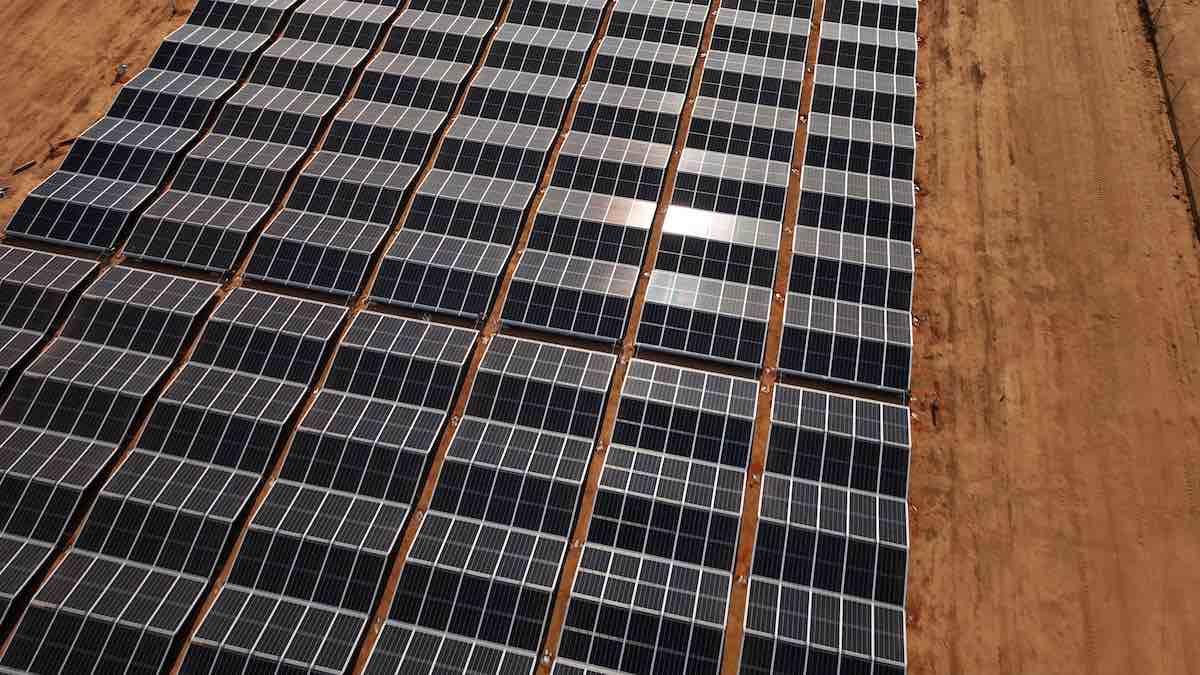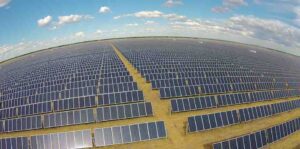The meteoric rise of solar PV – the quiet conqueror of coal on fossil fuel dominated electricity grids around the globe – is showing no sign of slowing down, as prices of the renewable energy generation technology continue to sink and defy market predictions.
Aside from a two-year blip between 2020 and 2022, when solar module prices rose by more than 50% due to supply chain fallout from the Covid 19 pandemic, the cost of PV has been falling at steady clip since the mid-2000s, averaging at around 10-15 per cent a year.
Come 2023, the downward march of module prices has well and truly resumed, again defying analysts’ predictions to reach the current historical low of around $150 per kW (15c/W) – a stunning drop of 42% from the price in January 2020, just before the pandemic hit.
This week, new research predicts that the wholesale cost of solar modules will halve again by 2040
The report from Rethink Technology Research predicts that the price of PV – based on “at time of writing, the cost of a silicon solar module fresh from the production line in China” of $154 per kW – will fall again to $US92.2/kW (9c/W) by 2030 and and $US71.1/kW (7c/W) by 2040 – a 53% decrease.

“The improvement to silicon module prices through 2030 will be driven by a broad swathe of incremental technological upgrades, which will continue at a slower pace through 2040,” explains Andries Wantenaar, lead analyst at Rethink.
Certainly, the falling prices will not reflect a backing off of demand.
In terms of capacity, Rethink predicts global demand for solar modules will peak at 1,308GW in 2037, preceding the total global solar fleet reaching 19TW in 2040 – over 12 times the current global solar fleet of 1.5TW.
“This report demonstrates there is much further to fall as the solar industry hits an extended period of overcapacity and consolidation – not from any weakness of demand, which has already grown to 600 GW, but from the over $100 billion invested in new solar manufacturing production capacity since 2020,” the report says.
Rethink is not alone in its predictions for cheaper and cheaper solar – and its forecast is not the most bullish.
In June, Clean Energy Finance’s Tim Buckley set the scene for a new “Solar Pivot”, based on the scale of solar installations and its plunging cost.
“The speed of change is momentous,” Buckley wrote here on RenewEconomy.
“We are seeing combined momentum on three related fronts: rapid ongoing solar price deflation, multifold increases in solar manufacturing capacity and successive record solar deployments.
“For example, polysilicon prices are down two-thirds since December 2022 to just US$11/kg in June 2023. As a result, solar module prices have dropped by a third from 2021, to a recent low of just $US18c/watt.
“At the same time, global freight costs have dropped more than 80% since the peak at the end of 2021,” Buckley continued, before making CEF’s “conservative prediction” that solar electricity costs will drop a further 10% a year for the rest of this decade, halving by 2030.
More recently, Buckley said module prices could hit the $0.10/W mark by the end of 2024 – and he expects prices will end up dropping by 40% this year alone.
Another forecast, from DR Dahlmeier Financial Risk Management forecasts that global volume of solar PV production will rise by a factor of 11 and the price will more than halve by 2030.
“We expect the volume of installed solar generation capacity to rise from 1.24TW in 2022 to around 14TW in 2030. The module price will fall from USD 0.22 per Watt-peak of generation capacity in summer 2023, to USD 0.097/W in 2030,” says Uwe Dahlmeier, the
Whichever way you slice it, the cost of generating energy from solar looks certain to continue to fall, and continue to eat the lunch of its fossil-fuelled competitors.
As another recent study puts it: “Solar energy is on track to make up more than half of global electricity generation by the middle of this century – even without more ambitious climate policies.”










